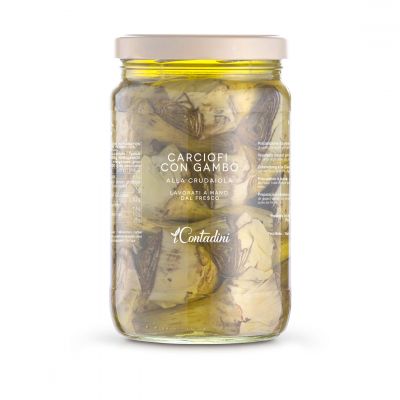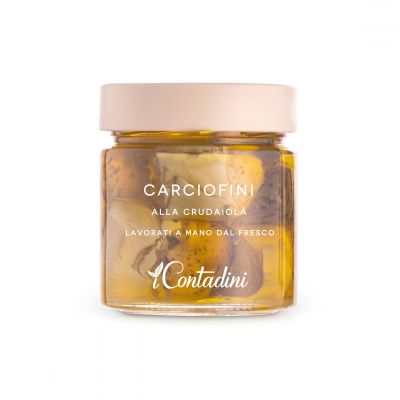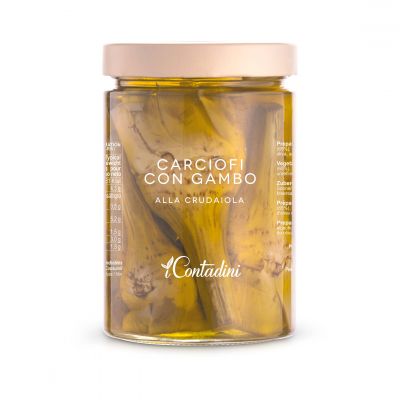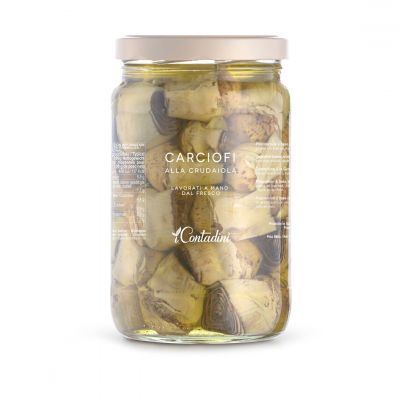Growing begins in September and plants reach their peak around seven months later, in mid-March: now is the best time to eat artichokes
⏱ 3 MINUTES READING
The spring solstice is approaching: the time of the year that brings a sense of renewal, the days get longer, we feel the warmth of the sun again, and our diet changes. Gradually, we move away from the rich, warming dishes of the winter months, replacing them with lighter recipes.
I have fond memories of going to pick wild sprouts with my grandmother. We’d take them home and wash them straight away to make them into risottos, frittata or salads.
Being outside and spending time in nature is less common these days: the lifestyle offered to us can easily make us to miss out on those true, simple pleasures as we conform to standardisation. 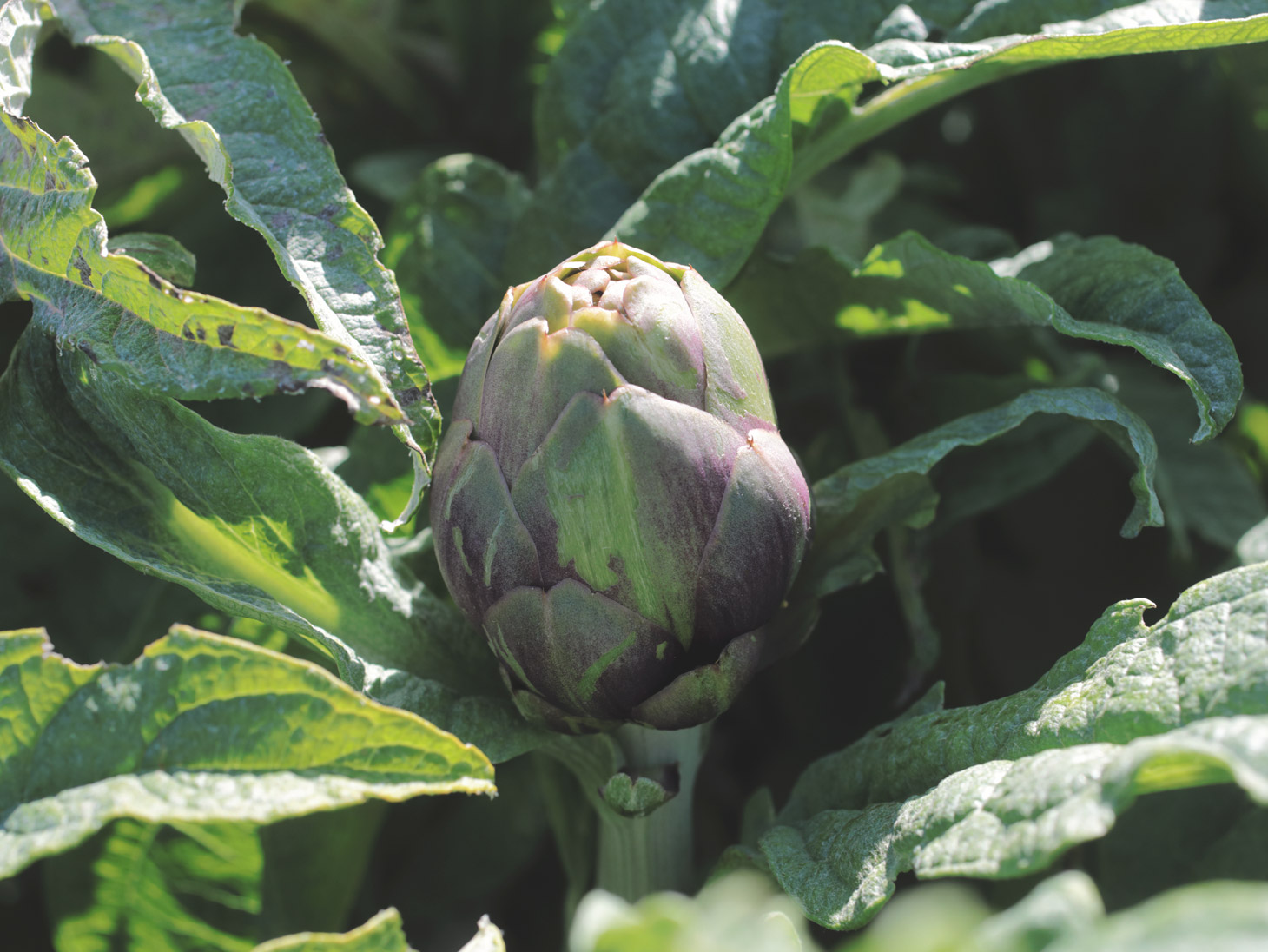
THE TIME IS NOW
The theme of this issue is the artichokes in oil by “I Contadini” which have been lovingly hand-picked during these weeks.
PRODUCER
We are in Ugento, in the Salento area in Apulia. Siblings Edoardo, Emanuele and Gianna Trentin produce a wide range of vegetables preserved in oil, and are firm believers in a traditional approach that’s strongly connected to the region.
Love for the land is in their blood: they get up when it’s still dark, following the seasons and the rhythms of nature, and always with a smile on their faces, something that’s as essential as water.
All the vegetables they jar in oil are grown by them, a fact that makes Edoardo’s eyes shine when he talks about it and for us this passion is as important as the genuineness of their products.
GROWING
The story of the Violetto Artichoke, begins in the first days of September, when the producer goes into the “old” field and begins to dig up the bulbs (ovules) ready to transfer them to new soil.
The artichoke is a perennial plant, and each year old bulbs are replanted to create the artichoke field. The Trentin family use only their own bulbs, meaning that they can avoid using other hybrid varieties available on the market.
When temperatures are high the plant enters a dormant phase, enabling it to survive hot, dry summers, but revives when watered. Once the ovules have been removed from the old field, the new field is ploughed relatively deeply, tilled, then fertilised generously. Manure-based fertiliser is used because artichokes need plenty of nitrogen.
The land must of course be watered before it can welcome the ovules into the ground, but from then on, in order to give the plants the water they need without wasting any (water is not an abundant resource in Apulia), Edoardo has installed an Israeli-produced micro-drop irrigation system that waters each plant at a rate of 1,6L an hour, the perfect dose required for the climate.
The ovules are planted at least a metre and a half apart (usually, in more intensive farming, this distance is reduced to a metre or even less). This allows good air circulation around the mature plant, keeping it dry in a natural way in order to keep the use of pesticides to a minimum. Farming this way, however, means that Edoardo reduces the number of plants he could grow by several thousands per hectare.
In mid-October the plants start to grow and in February the buds begin to develop. They will be harvested in mid-March when the plant is in full vigour.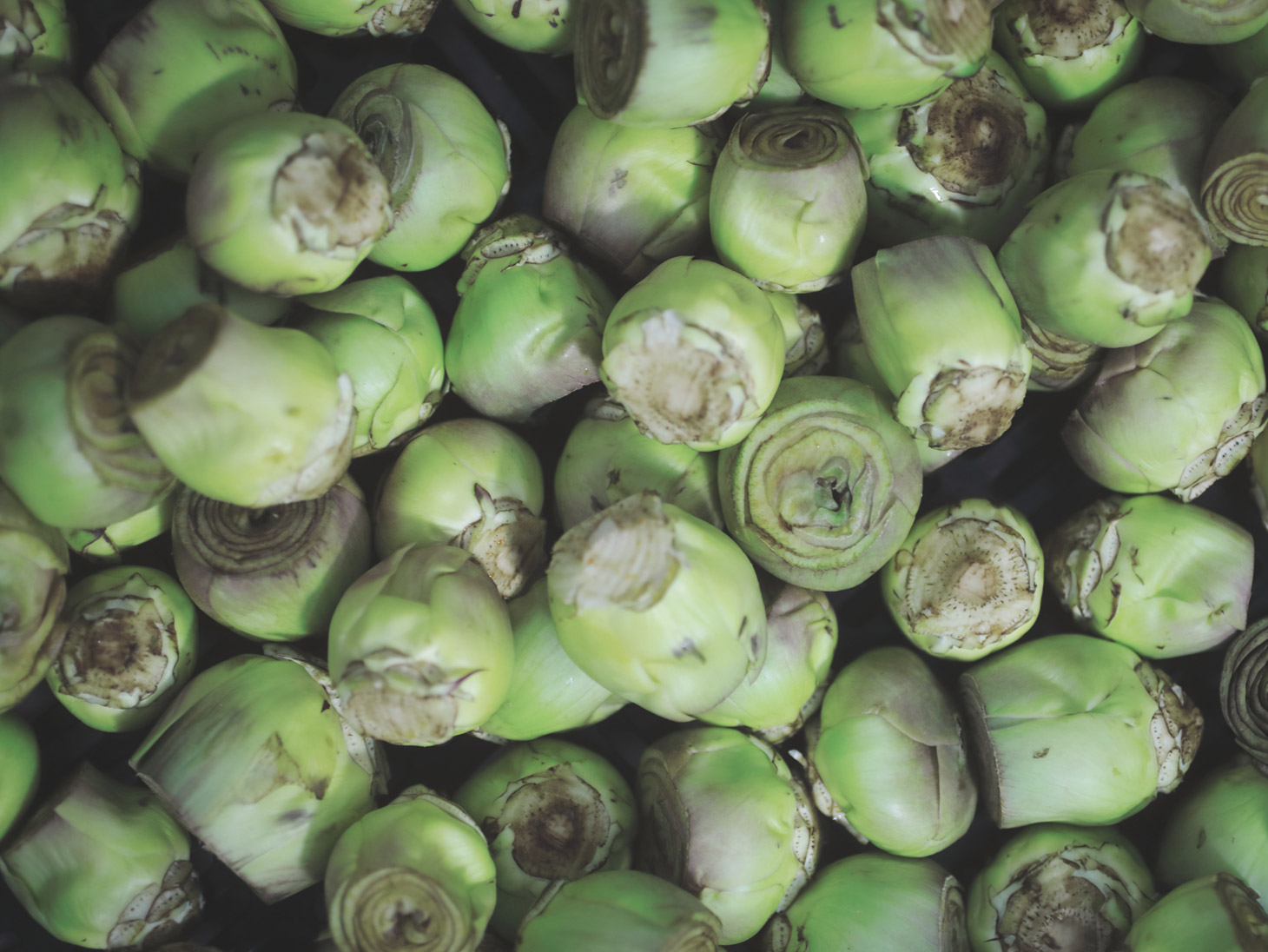
HARVESTING
A single plant produces between 12 and 15 buds. The first 5 have the best stalks and are destined to be sold as carciofi con gambo (artichokes with their stems). Next to be harvested are those used as carciofi alla crudaiola (whole artichokes without stems), in particular those sold in 1,6Kg jars.
Then the smaller buds are harvested, destined for the production of carciofini (small artichokes), carciofi candini (extra-small artichokes), and finally diamantino (little diamonds), the most prized because there are fewer available and they are the most delicate in terms of both fragility and flavour.
The entire process, from harvesting to trimming to jarring, is done strictly by hand, in order to ensure that the delicate artichokes are handled with the greatest attention and care.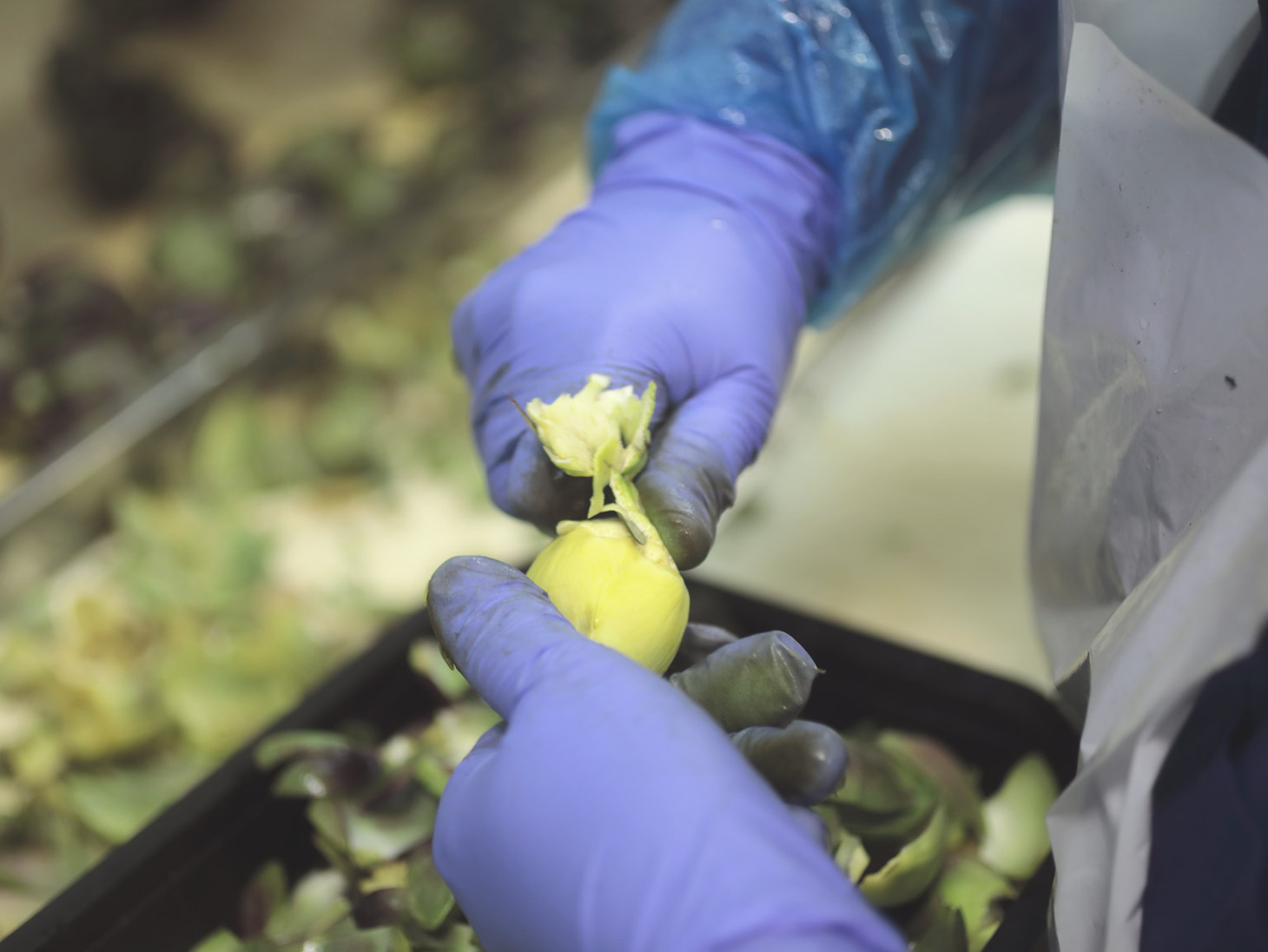
PROCESSING
Once harvested, the artichokes are cleaned and the outer leaves removed. They are then immersed in a solution of vinegar, salt and lemon juice.
They remain there until the conditions (in particular the pH and salinity) guarantee the stability and cleanliness of the product. The solution should be clear: this is necessary to ensure that the artichokes maintain their crunchiness and colour. Artichokes tend to go brown quickly and this is the reason why the processing phases need to be constantly monitored. When the artichokes are ready, they are placed in jars that are then filled with extra-virgin olive oil and pasteurised. Monitoring is essential throughout this phase to avoid stressing the product unduly, and to prevent them from being damaged.
Two weeks after packaging, distribution begins.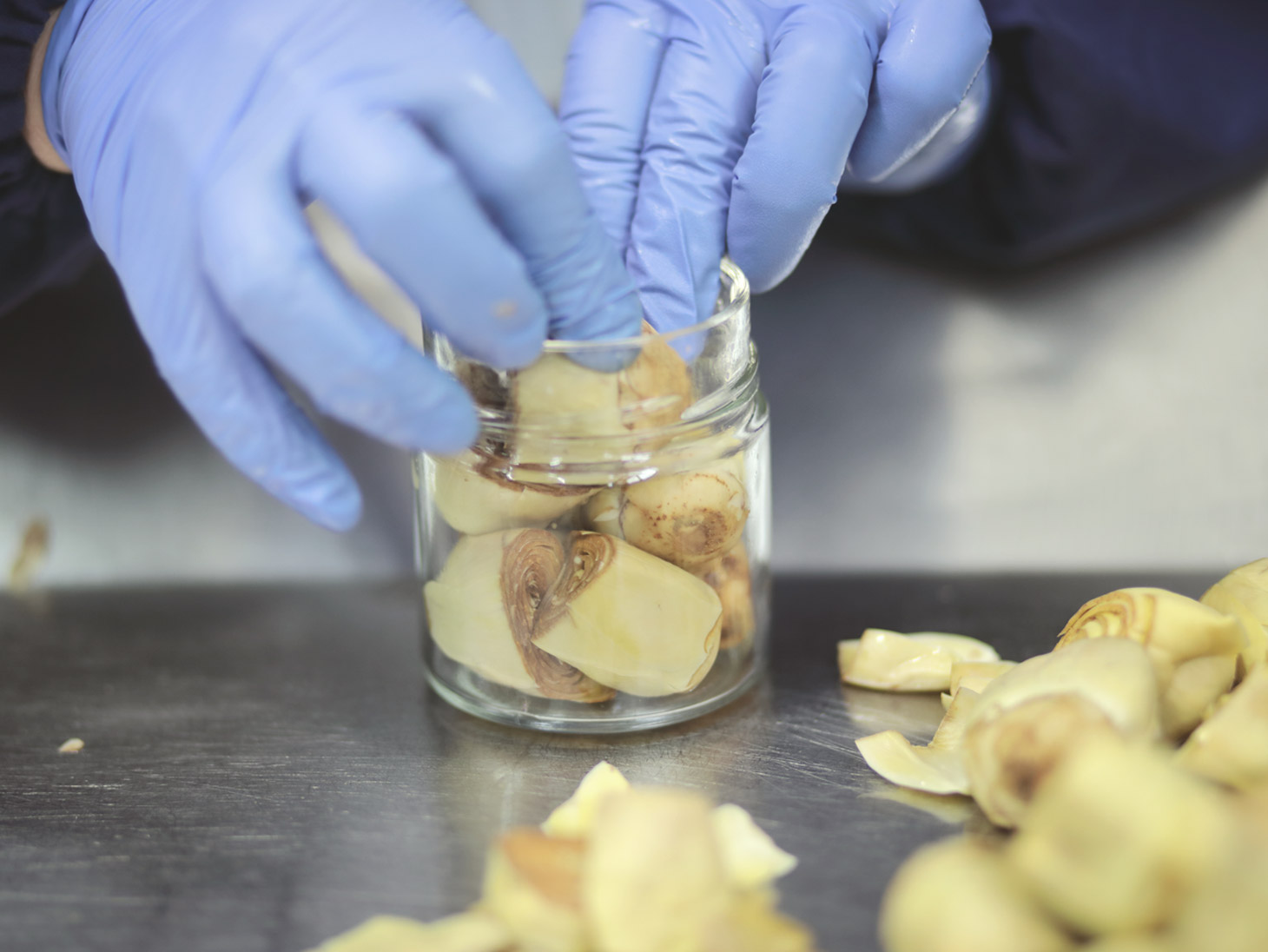 STORAGE
STORAGE
Thanks to the technology “I Contadini” have developed, artichokes do not lose their crunchiness during storage, and over the course of time the flavours become even more harmonious due to the continuous exchange that occurs with the extra virgin olive oil. And it’s extra virgin olive oil that’s the next project on the horizon for the three Trentin siblings. Their dream is to be the producers of everything contained in their jars - at which point the production chain will be complete.
90% of artichokes sold are from Egypt and Tunisia, semi-processed and stored in brine, where they remain for 5 or 6 months before being jarred and distributed. Needless to say, with this type of processing it’s hard for the artichokes to maintain their initial flavour and consistency.
Edoardo is very connected to the seasonality of products; he is passionate about his work and he understands the needs of the different plants: a tomato plant needs sun and long days, while chicory needs cold temperatures, short days and the opportunity to slowly absorb nutrients to make it good and plump.
While it’s possible to obtain vegetables all year round by ignoring seasonality, the compromise is in flavour.
He says: “In January a tomato sun-dried in July is better than a fresh one grown in a seed tray”.
Each plant has its own seasonality and this is the only way for it to reach its best.
We really like this philosophy and the idea of “preserves” that give us the possibility of enjoying vegetables at their best, all year round, grown and harvested at just the right time!
Giorgia Barbaresco
Quality Director




